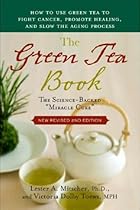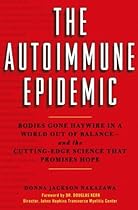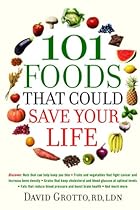Too Profitable to CureBrent Hoadley, Ph.D.
See book keywords and concepts |
| Considering the A and B chains of human insulin have 51 amino acids, there are millions of analogs of this growth hormone that could be considered using natural amino acids — remember beef and pork are just analogs of human insulin. Where's the advantage? Profitable new insulins with no proven record of better control—just patentable and profitable. An Aventis product —Lantus —has two additional amino acids molecules (glargine), for a total of 53 amino acids and one changed for another, essentially creating a foreign growth hormone structure. Attention diabeticsl Step right up. |
Michael T. Murray and Michael R. Lyon
See book keywords and concepts |
 Tryptophan has a difficult time getting into the brain because it competes with other amino acids for transport across the blood-brain barrier. After a high-carbohydrate meal, there are fewer molecules of amino acids that compete with tryptophan circulating in the bloodstream, thanks to our friend insulin. While insulin's primary job is to remove sugar from the blood and help it pass into the cells, it also promotes the absorption of certain amino acids into muscle tissue. As a result, there are fewer amino acids to compete with tryptophan for transport through the blood-brain barrier. Tryptophan has a difficult time getting into the brain because it competes with other amino acids for transport across the blood-brain barrier. After a high-carbohydrate meal, there are fewer molecules of amino acids that compete with tryptophan circulating in the bloodstream, thanks to our friend insulin. While insulin's primary job is to remove sugar from the blood and help it pass into the cells, it also promotes the absorption of certain amino acids into muscle tissue. As a result, there are fewer amino acids to compete with tryptophan for transport through the blood-brain barrier. |
Too Profitable to CureBrent Hoadley, Ph.D.
See book keywords and concepts |
| Considering the A and B chains of human insulin have 51 amino acids, there are millions of analogs of this growth hormone that could be considered using natural amino acids — remember beef and pork are just analogs of human insulin. Where's the advantage? Profitable new insulins with no proven record of better control—just patentable and profitable. An Aventis product —Lantus —has two additional amino acids molecules (glargine), for a total of 53 amino acids and one changed for another, essentially creating a foreign growth hormone structure. Attention diabeticsl Step right up. |
Mike Adams, the Health Ranger
See article keywords and concepts |
 It was never meant to have free amino acids in such high concentrations.
Well, when you hydrolyze them -- or you use yeast extract or enzymes to break down these various proteins into their free, released amino acids -- they're not natural any longer. What you've done is artificially release the amino acids in an unnatural way, and when they enter your GI tract, they are absorbed as free amino acids, then your blood level of that glutamic acid goes up significantly. As I said, it can go up as high as 20-fold, in some cases 40-fold. It was never meant to have free amino acids in such high concentrations.
Well, when you hydrolyze them -- or you use yeast extract or enzymes to break down these various proteins into their free, released amino acids -- they're not natural any longer. What you've done is artificially release the amino acids in an unnatural way, and when they enter your GI tract, they are absorbed as free amino acids, then your blood level of that glutamic acid goes up significantly. As I said, it can go up as high as 20-fold, in some cases 40-fold. |
| The level of free amino acids is nil; it's almost all absorbed as combined amino acids, and then it's only broken down in the liver, where it's released in very low concentrations that the body can deal with. It was never meant to have free amino acids in such high concentrations.
Well, when you hydrolyze them -- or you use yeast extract or enzymes to break down these various proteins into their free, released amino acids -- they're not natural any longer. |
Michael T. Murray and Michael R. Lyon
See book keywords and concepts |
 After a high-carbohydrate meal, there are fewer molecules of amino acids that compete with tryptophan circulating in the bloodstream, thanks to our friend insulin. While insulin's primary job is to remove sugar from the blood and help it pass into the cells, it also promotes the absorption of certain amino acids into muscle tissue. As a result, there are fewer amino acids to compete with tryptophan for transport through the blood-brain barrier. Therefore, as long as Cortisol levels are high, leading to low brain serotonin levels, carbohydrate cravings will be strong. After a high-carbohydrate meal, there are fewer molecules of amino acids that compete with tryptophan circulating in the bloodstream, thanks to our friend insulin. While insulin's primary job is to remove sugar from the blood and help it pass into the cells, it also promotes the absorption of certain amino acids into muscle tissue. As a result, there are fewer amino acids to compete with tryptophan for transport through the blood-brain barrier. Therefore, as long as Cortisol levels are high, leading to low brain serotonin levels, carbohydrate cravings will be strong. |
Marshall Editions
See book keywords and concepts |
 The body requires certain levels of amino acids to promote circulation and prevent fluid from leaking out of cells. amino acids can be added to the diet in the form of lean meats, vegetable proteins such as soy and legumes, or egg whites and low fat dairy products. Men and non-pregnant women should eat about 30 g of protein a day. A protein supplement (20 g) such as whey can be taken daily, otherwise three or more 4 oz servings of protein-rich food a day will provide sufficient amounts of amino acids. High amounts of sodium can also cause edema. The body requires certain levels of amino acids to promote circulation and prevent fluid from leaking out of cells. amino acids can be added to the diet in the form of lean meats, vegetable proteins such as soy and legumes, or egg whites and low fat dairy products. Men and non-pregnant women should eat about 30 g of protein a day. A protein supplement (20 g) such as whey can be taken daily, otherwise three or more 4 oz servings of protein-rich food a day will provide sufficient amounts of amino acids. High amounts of sodium can also cause edema. |
Mike Adams, the Health Ranger
See article keywords and concepts |
 Well, when you hydrolyze them -- or you use yeast extract or enzymes to break down these various proteins into their free, released amino acids -- they're not natural any longer. What you've done is artificially release the amino acids in an unnatural way, and when they enter your GI tract, they are absorbed as free amino acids, then your blood level of that glutamic acid goes up significantly. As I said, it can go up as high as 20-fold, in some cases 40-fold. Your blood brain barrier is not constructed to handle such high levels of glutamate, because it doesn't naturally occur that way. Well, when you hydrolyze them -- or you use yeast extract or enzymes to break down these various proteins into their free, released amino acids -- they're not natural any longer. What you've done is artificially release the amino acids in an unnatural way, and when they enter your GI tract, they are absorbed as free amino acids, then your blood level of that glutamic acid goes up significantly. As I said, it can go up as high as 20-fold, in some cases 40-fold. Your blood brain barrier is not constructed to handle such high levels of glutamate, because it doesn't naturally occur that way. |
Michael T. Murray and Michael R. Lyon
See book keywords and concepts |
 While insulin's primary job is to remove sugar from the blood and help it pass into the cells, it also promotes the absorption of certain amino acids into muscle tissue. As a result, there are fewer amino acids to compete with tryptophan for transport through the blood-brain barrier. Therefore, as long as Cortisol levels are high, leading to low brain serotonin levels, carbohydrate cravings will be strong.
5-HYDROXYTRYPTOPHAN (5-HTP), SATIETY, AND WEIGHT LOSS
The amino acid 5-HTP is the intermediate step between tryptophan and the important brain chemical serotonin. While insulin's primary job is to remove sugar from the blood and help it pass into the cells, it also promotes the absorption of certain amino acids into muscle tissue. As a result, there are fewer amino acids to compete with tryptophan for transport through the blood-brain barrier. Therefore, as long as Cortisol levels are high, leading to low brain serotonin levels, carbohydrate cravings will be strong.
5-HYDROXYTRYPTOPHAN (5-HTP), SATIETY, AND WEIGHT LOSS
The amino acid 5-HTP is the intermediate step between tryptophan and the important brain chemical serotonin. |
Peter J. Whitehouse and Daniel George
See book keywords and concepts |
 Peptides are small proteins composed of amino acids.
If the enzyme alpha-secretase is active, the APP is cleaved in the middle and forms apparently harmless protein fragments. But if the APP is cut by enzymes called beta- and gamma-secretases, the BAP peptide fragment is formed.
This differential pattern of cleavage is important because the amyloid cascade hypothesis holds that this BAP fragment, formed by forty-two amino acids, is toxic to the brain. Peptides are small proteins composed of amino acids.
If the enzyme alpha-secretase is active, the APP is cleaved in the middle and forms apparently harmless protein fragments. But if the APP is cut by enzymes called beta- and gamma-secretases, the BAP peptide fragment is formed.
This differential pattern of cleavage is important because the amyloid cascade hypothesis holds that this BAP fragment, formed by forty-two amino acids, is toxic to the brain. |
| In a healthy brain, APP, which is composed of about seven hundred protein building blocks called amino acids, is cleaved and released from the cell membrane by enzymes called secretases. Different types of secretases can act on different portions of the APP, creating peptides that differ in length. Peptides are small proteins composed of amino acids.
If the enzyme alpha-secretase is active, the APP is cleaved in the middle and forms apparently harmless protein fragments. But if the APP is cut by enzymes called beta- and gamma-secretases, the BAP peptide fragment is formed. |
Lester A. Mitscher and Victoria Toews
See book keywords and concepts |
 Green tea contains several amino acids (the building blocks of proteins) including aspartic acid, glutamic acid, glycine, serine, glutamine, tyrosine, threonine, alanine, valine, leucine, isoleucine, phenylalanine, lysine, arginine, histidine, tryptophan, aspargine, and proline. Besides these common amino acids, green tea contains another amino acid that is unique to it: theanine. Theanine constitutes about half of the total amino acid levels in green tea, and its presence is said to correlate with tea quality. Green tea contains several amino acids (the building blocks of proteins) including aspartic acid, glutamic acid, glycine, serine, glutamine, tyrosine, threonine, alanine, valine, leucine, isoleucine, phenylalanine, lysine, arginine, histidine, tryptophan, aspargine, and proline. Besides these common amino acids, green tea contains another amino acid that is unique to it: theanine. Theanine constitutes about half of the total amino acid levels in green tea, and its presence is said to correlate with tea quality. |
Michael T. Murray and Michael R. Lyon
See book keywords and concepts |
 One of the key reasons why the biological value of whey protein is so high is that it has the highest concentrations of glutamine and branched chain amino acids (BCAAs) found in nature. These amino acids are critical to cellular health, muscle growth, and protein synthesis.
Although the most popular use of whey protein is by body builders and athletes looking to increase their protein intake, whey protein is also used to support recovery from surgery, prevent the "wasting syndrome" of AIDS, and offset some of the negative effects of radiation therapy and chemotherapy. One of the key reasons why the biological value of whey protein is so high is that it has the highest concentrations of glutamine and branched chain amino acids (BCAAs) found in nature. These amino acids are critical to cellular health, muscle growth, and protein synthesis.
Although the most popular use of whey protein is by body builders and athletes looking to increase their protein intake, whey protein is also used to support recovery from surgery, prevent the "wasting syndrome" of AIDS, and offset some of the negative effects of radiation therapy and chemotherapy. |
Antoinette Saville and Antony J. Haynes
See book keywords and concepts |
 Amino Acid Deficiency
Since amino acids are required to nourish the intestinal lining - indeed, as much as 50 percent of the amino acids we consume may feed the intestines directly - a lack of one or more of these building-blocks can contribute to a leaky gut. L-glutamine and N-acetyl-glucosamine (NAG) are the most important, but a variety of others play a role, too, including arginine, taurine and the branched-chain amino acids (leucine, isoleucine, valine). Amino Acid Deficiency
Since amino acids are required to nourish the intestinal lining - indeed, as much as 50 percent of the amino acids we consume may feed the intestines directly - a lack of one or more of these building-blocks can contribute to a leaky gut. L-glutamine and N-acetyl-glucosamine (NAG) are the most important, but a variety of others play a role, too, including arginine, taurine and the branched-chain amino acids (leucine, isoleucine, valine). |
Too Profitable to CureBrent Hoadley, Ph.D.
See book keywords and concepts |
| An Aventis product —Lantus —has two additional amino acids molecules (glargine), for a total of 53 amino acids and one changed for another, essentially creating a foreign growth hormone structure. Attention diabeticsl Step right up. Be a human guinea pig for determining long-term results! There is no proof it is any better than Beef UL, only that it might be better than the very worst of the human "insulins from hell," NPH or Isophane human. New hormone technology is inherently dangerous. |
| The disulfide that completes this bonding bridge between the amino acids, has 15 possible chemical positions along and A and B strands.
The A and B chains are bonded by two cystine bridges with one bridge located on the A chain for a total of three bridges. Six residues (amino acids) are found in the two (A and B) chains. Statistically, this allows for 15 possible different cystine bridges. In biologically active human insulin, the bridges along the A and B amino acid strands are A6-A11, A7-B7, and A20-B19. Without batch testing, only Eli Lilly knows how good their methodology is. |
| An Aventis product —Lantus —has two additional amino acids molecules (glargine), for a total of 53 amino acids and one changed for another, essentially creating a foreign growth hormone structure. Attention diabeticsl Step right up. Be a human guinea pig for determining long-term results! There is no proof it is any better than Beef UL, only that it might be better than the very worst of the human "insulins from hell," NPH or Isophane human. New hormone technology is inherently dangerous. |
Mary-Ann Shearer
See book keywords and concepts |
 Protein is made up of twenty-three (some textbooks say twenty-two) amino acids, eight of which our adult bodies cannot manufacture and that they need to obtain from our diet (babies need a ninth and some say a tenth amino acid, which are found in breast milk). amino acids are the building blocks of protein. They form the different types of protein our bodies need, of which there are many thousands.
Originally it was taught that our bodies need to take in the eight essential amino acids at each meal. Protein is made up of twenty-three (some textbooks say twenty-two) amino acids, eight of which our adult bodies cannot manufacture and that they need to obtain from our diet (babies need a ninth and some say a tenth amino acid, which are found in breast milk). amino acids are the building blocks of protein. They form the different types of protein our bodies need, of which there are many thousands.
Originally it was taught that our bodies need to take in the eight essential amino acids at each meal. |
Paul D. Blanc, M.D.
See book keywords and concepts |
 Collagen is a protein polymer, a specific category of molecules in which the sttuctural backbone is made up of repeating sequences of amino acids.
Although plants do not make collagen, they do produce theit own long molecular polymers that, like collagen, help them hold themselves together. These polymers, too, can be exploited for their adhesive qualities. In contrast to collagen, however, gluey plant polymers are made up of repeated sequences of sugars, not amino acids. Very long polymer strings of sugar occurring in nature are called cellulose. Collagen is a protein polymer, a specific category of molecules in which the sttuctural backbone is made up of repeating sequences of amino acids.
Although plants do not make collagen, they do produce theit own long molecular polymers that, like collagen, help them hold themselves together. These polymers, too, can be exploited for their adhesive qualities. In contrast to collagen, however, gluey plant polymers are made up of repeated sequences of sugars, not amino acids. Very long polymer strings of sugar occurring in nature are called cellulose. |
Tanya Harter Pierce
See book keywords and concepts |
 During his years as a medical student, he studied amino acids and peptides and published papers about his work. He first started analyzing amino acids in wild mushrooms to see if he could turn some of the toxic chains of amino acids that were present in the mushrooms into new antibiotics. Then, he moved on to studying other organic fluids, including blood and urine, that contained peptides. (Peptides are short chains of amino acids.) He began finding peptides in human blood and urine that no one had ever known about before. According to Burzynski, "nobody had bothered to identify them. During his years as a medical student, he studied amino acids and peptides and published papers about his work. He first started analyzing amino acids in wild mushrooms to see if he could turn some of the toxic chains of amino acids that were present in the mushrooms into new antibiotics. Then, he moved on to studying other organic fluids, including blood and urine, that contained peptides. (Peptides are short chains of amino acids.) He began finding peptides in human blood and urine that no one had ever known about before. According to Burzynski, "nobody had bothered to identify them. |
Donna Jackson Nakazawa
See book keywords and concepts |
 Each sequence of amino acids forms a unique pattern, something like the bar codes on supermarket items that the scanner in the grocery store recognizes as you go through the checkout line. Let's say a flu virus enters your body. Immune cells that are programmed to recognize the proteins from the flu virus set out to find it and attack it. They are able to recognize these proteins as dangerous because they recognize the unique code of amino acids on the surface of the virus. Each sequence of amino acids forms a unique pattern, something like the bar codes on supermarket items that the scanner in the grocery store recognizes as you go through the checkout line. Let's say a flu virus enters your body. Immune cells that are programmed to recognize the proteins from the flu virus set out to find it and attack it. They are able to recognize these proteins as dangerous because they recognize the unique code of amino acids on the surface of the virus. |
David Winston, RH(AHG), and Steven Maimes
See book keywords and concepts |
 When Cortisol is secreted, it causes a breakdown of muscle protein, leading to the release of amino acids (the "building blocks" of protein) into the bloodstream. These amino acids then are used by the liver to synthesize glucose for energy, in a process called gluconeogenesis. This process raises the blood sugar level so the brain will have more glucose for energy. At the same time, the other tissues of the body decrease their use of glucose as fuel. Cortisol secretion also leads to the release of fatty acids for use by the muscles. When Cortisol is secreted, it causes a breakdown of muscle protein, leading to the release of amino acids (the "building blocks" of protein) into the bloodstream. These amino acids then are used by the liver to synthesize glucose for energy, in a process called gluconeogenesis. This process raises the blood sugar level so the brain will have more glucose for energy. At the same time, the other tissues of the body decrease their use of glucose as fuel. Cortisol secretion also leads to the release of fatty acids for use by the muscles. |
Donna Jackson Nakazawa
See book keywords and concepts |
 They may see a set of amino acids, or a bar code, in healthy body tissue that is very like those in the flu virus, and instead of recognizing that pattern as being similar yet distinctly different, they goof, mistaking the sequence of amino acids in the healthy body cells for those belonging to the infiltrating germ. They set out to obliterate all the cells and viruses that share the same sequences, just to be sure they are getting the job done.
Such was the case in my own episodes of neurological autoimmunity. They may see a set of amino acids, or a bar code, in healthy body tissue that is very like those in the flu virus, and instead of recognizing that pattern as being similar yet distinctly different, they goof, mistaking the sequence of amino acids in the healthy body cells for those belonging to the infiltrating germ. They set out to obliterate all the cells and viruses that share the same sequences, just to be sure they are getting the job done.
Such was the case in my own episodes of neurological autoimmunity. |
| By looking at its structure, Harley hoped he and James might be able to peer into the past and see what pattern of amino acids on a foreign antigen so closely imitated the pattern of eight amino acids in the Sm B sequence that it could cause lupus patients' immune systems to err, triggering the whole cascade of events leading to lupus.
Still, he wasn't overly hopeful. There were literally thousands of potential antigens out there.
Yet what Judi James found was startling. |
Antoinette Saville and Antony J. Haynes
See book keywords and concepts |
 Endorphins are comprised of short chains of amino acids called peptides. Proteins are made up of longer chains of amino acids. When foods are digested in the stomach, the proteins in those foods are broken down from these long-chain amino acids into peptides. By some quirk of nature, some of the peptides derived from food are almost identical to our endorphin peptides. The name given to these peptides is exorphins, because they come from outside the body. Exorphins can be derived from a variety of foods including wheat, maize, barley, and milk. Endorphins are comprised of short chains of amino acids called peptides. Proteins are made up of longer chains of amino acids. When foods are digested in the stomach, the proteins in those foods are broken down from these long-chain amino acids into peptides. By some quirk of nature, some of the peptides derived from food are almost identical to our endorphin peptides. The name given to these peptides is exorphins, because they come from outside the body. Exorphins can be derived from a variety of foods including wheat, maize, barley, and milk. |
David W. Grotto, RD, LDN
See book keywords and concepts |
 And what is unique about the protein in quinoa is that it is complete, containing all essential amino acids, being especially high in the amino acids lysine, methionine, and cystine. By adding it to other grains, those proteins become complete too. It also complements soy, which is lower in methionine and cystine. Quinoa is rich in iron, potassium, and riboflavin as well as B6, niacin, and thiamin. It is also a good source of magnesium, zinc, copper, and manganese, and has some folate (folic acid). And what is unique about the protein in quinoa is that it is complete, containing all essential amino acids, being especially high in the amino acids lysine, methionine, and cystine. By adding it to other grains, those proteins become complete too. It also complements soy, which is lower in methionine and cystine. Quinoa is rich in iron, potassium, and riboflavin as well as B6, niacin, and thiamin. It is also a good source of magnesium, zinc, copper, and manganese, and has some folate (folic acid). |












